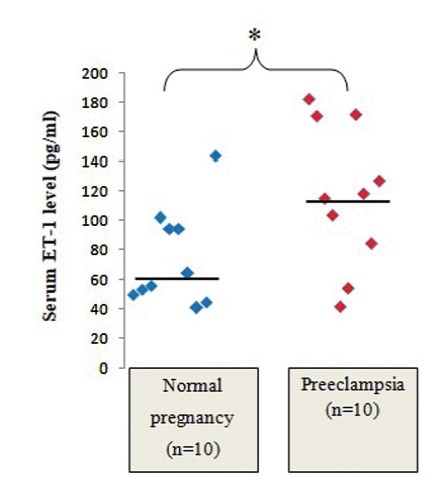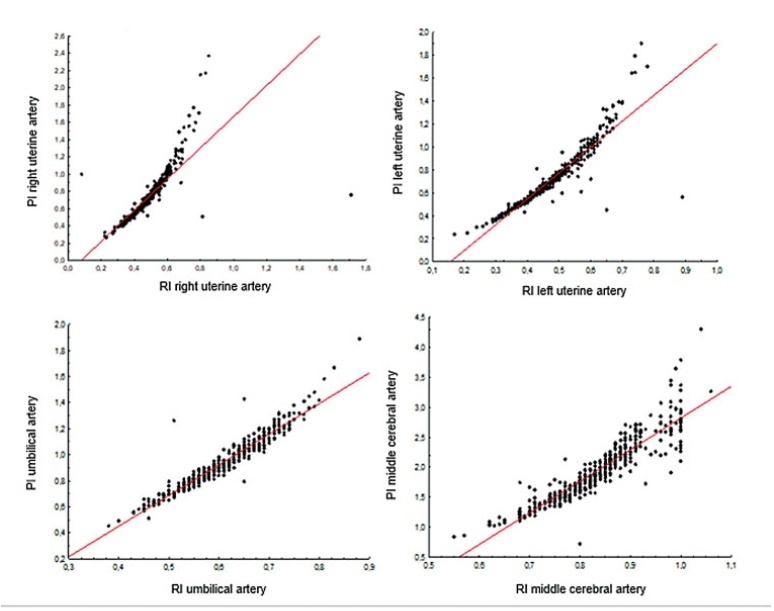Summary
Revista Brasileira de Ginecologia e Obstetrícia. 2022;44(2):133-141
To investigate the prevalence of premenstrual syndrome (PMS) and premenstrual dysphoric disorder (PMDD) in university students, the factors associated with PMS, the most prevalent symptoms, and the interference of symptoms in academic, family, social, and work activities.
This cross-sectional study included 1,115 university students aged ≥ 18 years from the University of Rio Verde, Goiás. Premenstrual syndrome and PMDD were identified using the Premenstrual Symptoms Screening Tool. Associations with sociodemographic, behavioral, reproductive, nutritional, and health factors were investigated using the Poisson regression.
The prevalence of PMS was 46.9% (95% confidence interval [CI] 44.0-49.8), and of PMDD, 11.1% (95% CI 9.3-13.0). The most prevalent symptoms were physical, such as breast tenderness, bloating, e weight gain (73%); followed by psychological ones such as overeating/food cravings, tearful/more sensitive to rejection (> 60%). More than 30% of the patients reported that the symptoms interfered in a moderate-tosevere way in their social and academic activities. After adjusted analysis, PMS was more prevalent in those who were attending the 1st/2nd semester of college (prevalence ratio [PR] 1.44; 95% CI 1.14-1.80), those who consumed alcohol in the last 30 days (PR 1.23; 95% CI 1.04-1.47), and those who had depression (PR 1.49; 95% CI 1.30-1.71).
Almost half of the university students had PMS and ~ 11%, PMDD. Physical symptoms were themost common and interfered in amoderate-to-severe way in various aspects of life. Attending the first semesters, consuming alcohol, and having depression were risk factors for PMS. The identification of risk factors for PMS is essential to prevent symptoms and reduce the impact of the syndrome.
Summary
Revista Brasileira de Ginecologia e Obstetrícia. 2022;44(2):125-132
To investigate the expression of endothelin-1 (ET-1) and endothelial nitric oxide (NO) synthase (eNOS) in normal and preeclamptic (PE) placentae.
The present cross-sectional analytical study was performed in normal and PE primigravidae (n=10 in each group) who were admitted to the North Okkalapa General and Teaching Hospital from February 2019 to February 2020. Serum samples were collected immediately before delivery, and placental tissues were collected immediately after emergency or elective cesarean section. The expression of placental eNOS was measured by western blot, and the levels of ET-1 in placental tissue homogenates and in the serum were measured by enzyme-linked immunosorbent assay (ELISA).
The PEgrouphadsignificantly higher serumlevelsof ET-1(median: 116.56 pg/mL; IQR: 89.14-159.62 pg/mL) than the normal group (median: 60.02 pg/mL; IQR: 50.89-94.37 pg/mL) (p<0.05). However, statistically significant differences were not observed in the levels of ET-1 in placental tissue homogenates between normal and PE placentae (median: 0.007 pg/μg of total protein; IQR: 0.002-0.0123 pg/μg of total protein; andmedian: 0.005 pg/μg of total protein; IQR: 0.003-0.016 pg/μg of total protein respectively). The median and IQR values of relative placental eNOS expression were significantly higher in the PE group than in the normal group (p<0.05). The serum levels of ET-1 level were not significantly correlated with placental ET-1 expression, and neither there was a significant correlation between placental ET-1 and eNOS expression in any of the groups.
The serum levels of ET-1 were significantly higher in PE pregnant women compared with normal pregnant women, while the ET-1 levels of placental tissue homogenates were not significantly different. Serum ET-1 rather than placental ET-1 might play a major role in the pathogenesis of PE.

Summary
Revista Brasileira de Ginecologia e Obstetrícia. 2022;44(2):118-124
To assess the degree of correlation/agreement of maternal-fetal Doppler parameters between normal and growth-restricted fetuses (fetal growth restriction [FGR]).
The present observational and retrospective study included 274 singleton pregnancies. The following maternal-fetal Doppler parameters were assessed: uterine artery (UAt), umbilical artery (UA), middle cerebral artery (MCA), cerebroplacental ratio (CPR), and umbilical-cerebral ratio (U/C). The assessment of FGR was based on the Figueiras and Gratacós9 criteria. Spearman correlation coefficients were estimated to assess the correlation between resistance (RI) and pulsatility (PI) indices of Doppler parameters. The agreement between two Doppler parameters was assessed by the Kappa coefficient.
In total, 502 Doppler examinations were included, and FGR was observed in 19 out of 274 fetuses. A strong correlation was observed between RI and PI of UAt, UA, and MCA in all of the samples (p<0.001). Of the 502 Doppler examinations, there was agreement between U/C and CPR percentiles for 480 (95.6%) and disagreement for 22 (4.4%), with Kappa coefficient of 0.26, thereby corresponding to weak agreement. Of the 68 cases with estimated fetal weight ≤ 9th percentile (small for gestational age [SGA]), there was agreement between U/C>1.0 and CPR<5th percentile in 61 (88.4%) and disagreement in 7 (5.8%) with Kappa coefficient of 0.49, thereby corresponding to moderate agreement.
Strong correlation was observed among RI and PI UAt, UA, and MCA Doppler examinations in the present study; however, weak agreement was observed between U/C and CPR in the normal and FGR fetuses. In SGA, U/C and CPR demonstrated moderate agreement.

Summary
Revista Brasileira de Ginecologia e Obstetrícia. 2022;44(2):100-108
In addition to being a medical phenomenon, pandemics affect the individual and society on several levels and lead to disruptions. In the pandemic process, different groups in the population, including pregnant women as a defenseless group, are subjected to psychological threat. The present study aimed to determine the levels of anxiety and depression and related factors in pregnant women during the the coronavirus disease 2019 (Covid-19) pandemic.
The present cross-sectional study was conducted with 269 pregnant women through face-to-face interviews held in Istanbul, Turkey. Regarding the data collection tools, the Cronbach α reliability coefficient was of 0.90 for the Beck Anxiety Inventory, and of 0.85 for the Beck Depression Inventory.
Among the participating pregnant women, 30.5% had mild, 17.5% had moderate, and 5.9% had severe anxiety symptoms, whereas 35.3% had mild, 16.7% had moderate, and 2.2% had severe depression symptoms. We found that those who were concerned about their health had 5.36 times (p=0.04) more risk of developing anxiety, and 4.82 times (p=0.01) more risk of developing depression than those who were not concerned. Those who had a history of psychiatric disease had 3.92 times (p=0.02) more risk of developing anxiety than those without it.
We determined that about half of the pregnant women included in the study had some degree of anxiety and depression during the COVID-19 pandemic. The risk factors for anxiety and depression among the pregnant women were determined as smoking, concerns about health and getting infectedwith the coronavirus, history of psychiatric disease, and undergoing regular antenatal care.
Summary
Revista Brasileira de Ginecologia e Obstetrícia. 2022;44(4):385-390
To evaluate the role of cervical cytology (Pap smear) in the diagnosis of cervical intraepithelial neoplasia 2 or greater (CIN2+), presented exclusively in the endocervical canal, the clinical-epidemiological characteristics of this lesion, the necessary length of canal to be removed to treat, and the rate of invasive lesion hidden in the endocervical canal.
Cross-sectional study, by database analysis, of patients with abnormal cytology (high-grade squamous intraepithelial lesion [HSIL]), without visible colposcopy lesion, submitted to loop electrosurgical procedure (LEEP) to evaluate the association of cytology results with the histological product of the conization, to identify the epidemiological characteristics of endocervical lesion and clinical evolution, using a pvalue< 0.05 and 95% CI.
In 444 cases, the Pap smear sensitivity for CIN2+ diagnosis was 75% (95% CI: 69.8-79.7), specificity was 40% (95% CI: 30.2-49.5), and the prevalence rate of histological lesion was 73% (95% CI: 70.1-78.7). There was a higher prevalence of CIN2+ in women over 42 years old and invasive cancer in those over 56 years old (p<0.001), and it was necessary to remove 2.6 cm in length of the canal to reduce the chance of recurrence (p<0.006). The rate of invasive cancer was 2.7%.
Cytology was related to a high prevalence to histological lesion (73%) in the diagnosis of CIN2+ in the endocervical disease; older patients presented a higher relationship with histological lesions in the canal disease, and it was necessary to remove an average of 2.6 cm in length of the endocervical canal to avoid the persistence and progression of CIN. The rate of occult neoplasia in the endocervical canal was 2.7%.
Summary
Revista Brasileira de Ginecologia e Obstetrícia. 2022;44(4):360-368
To assess the levels of physical activity and exercise practice, and examine the associated maternal characteristics; as well as the anxiety levels of high-risk pregnant women.
A cross-sectional study conducted with pregnant women at a High-risk Prenatal Clinic (HRPC) in a tertiary maternity. Pregnant women of 18 to 40-years-old, with a single fetus, and with gestational age up to 38 weeks were included. The level of physical activity and exercise practice of the study’s participants were investigated using the Pregnancy Physical Activity Questionnaire (PPAQ). Maternal sociodemographic, anthropometric, and medical data were investigated using a specific form. For anxiety levels, the short version of the State-Trait Anxiety Inventory (STAI) was applied. We used the Student t-test, chi-square test, odds ratio (OR) with 95% confidence interval (95% CI) and multiple logistic regression. The significance level was 5%.
Among the 109 pregnant women included, 82 (75.2%) were classified as sedentary/little active. The higher energy expenditure were for domestic activities (133.81±81.84 METs), followed by work-related activities (40.77±84.71 METs). Only 19.3% women exercised during pregnancy (4.76±12.47 METs), with slow walking being the most reported exercise. A higher level of education was the most important factor associated with women being moderately or vigorously active (OR=29.8; 95% CI 4.9-117.8). Nulliparity (OR=3.1; 95% CI 1.0-9.1), low levels of anxiety (OR=3.6; 95% CI 1.2-10.7), and unemployment (OR=4.8; 95% CI 1.1-19.6) were associated with the practice of exercise during pregnancy.
Most women with high-risk pregnancies exhibited a sedentary pattern, with low prevalence of physical exercise practice. Recognizing factors that hinder the adoption of a more physically active lifestyle is essential for an individualized guidance regarding exercise during pregnancy.